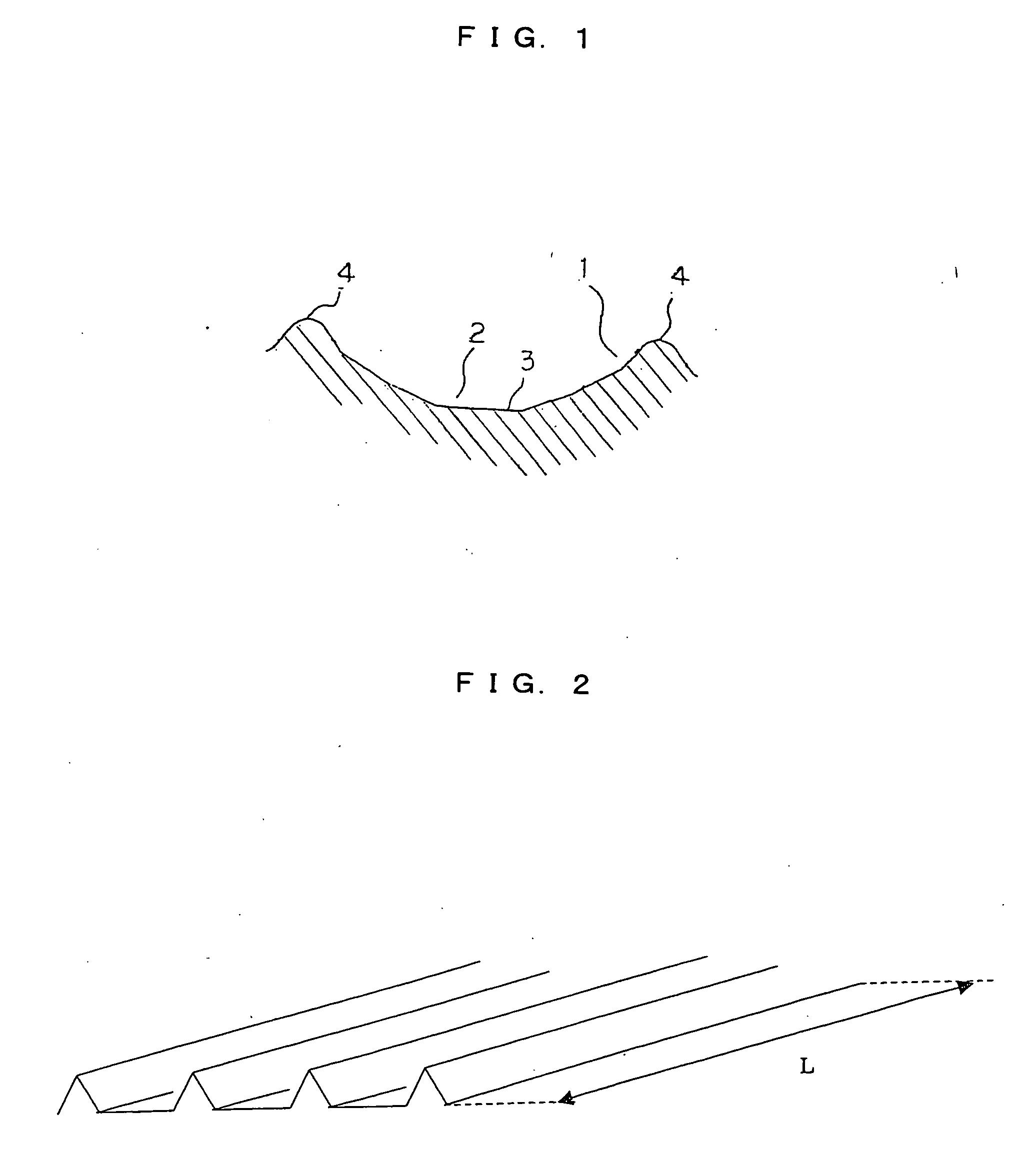Light refection sheet, process for producing the same and molding thereof
a technology of light reflection and moldable sheets, which is applied in the manufacture of filaments, lighting and heating apparatuses, instruments, etc., can solve the problems of insufficient investigation of thermally moldable sheets, less freedom of forms in molding, and cost of processing such as bending, etc., and achieves high reflectivity, high shading properties, and flame retardancy.
- Summary
- Abstract
- Description
- Claims
- Application Information
AI Technical Summary
Benefits of technology
Problems solved by technology
Method used
Image
Examples
production example 1
Production of PC-PDMS Copolymer
(1) Production of PC Oligomer
[0156] Bisphenol A of 60 kg was dissolved in a 5 mass % sodium hydroxide aqueous solution of 400 liter to prepare a sodium hydroxide aqueous solution of bisphenol A. Then, a tubular reactor having an inner diameter of 10 mm and a tube length of 10 m was charged with the above sodium hydroxide aqueous solution of bisphenol A maintained at room temperature at a flow amount of 138 liter / hour and methylene chloride at a flow amount of 69 liter / hour through an orifice plate, and phosgene was blown thereinto in a parallel flow at a flow amount of 10.7 kg / hour to continuously react them for 3 hours. The tubular reactor used above assumed a double tube structure, and cooling water was passed through the jacket part to maintain a discharge temperature of the reaction liquid at 25° C. The discharge liquid was controlled to a pH of 10 to 11.
[0157] The reaction liquid thus obtained was left standing still, whereby the aqueous phase...
production example 2
Production of PC Resin Composition-1
[0165] Total 100 mass parts of 46 mass % of the polycarbonate-polydimethylsiloxane copolymer (PC-PDMS, Mv=17,000, PDMS content=3.0 mass %) obtained in Production Example 1, 24 mass % of bisphenol A type linear polycarbonate 1 (brand name: Tarflon FN1500, Mv=14,500, manufactured by Idemitsu Petrochemical Co., Ltd.) and 30 mass % of titanium oxide powder (brand name: PF726, manufactured by Ishiwara Sangyo Co., Ltd.) was mixed with 1.2 mass part of organosiloxane (brand name: BY16-161, manufactured by•Dow Corning Toray Co., Ltd.), 0.3 mass part of polytetrafluoroethylene (PTFE, brand name: CD076, manufactured by Asahi Glass Co., Ltd.) and 0.1 mass part of triphenylphosphine (brand name: JC263, manufactured by Johoku Chemical Co., Ltd.), and the mixture was molten and kneaded by means of a double shaft extruding machine to obtain a PC resin composition-1.
production example 3
Production of PC Resin Composition-2
[0166] Total 100 mass parts of 40 mass % of bisphenol A type linear polycarbonate 2 (brand name: Tarflon FN1900, Mv=19,000, manufactured by Idemitsu Petrochemical Co., Ltd.), 40 mass % of bisphenol A type linear polycarbonate 3 (brand name: Tarflon FN1700, Mv=17,000, manufactured by Idemitsu Petrochemical Co., Ltd.) and 20 mass % of titanium oxide powder (brand name: PF726, manufactured by Ishiwara Sangyo Co., Ltd.) was mixed with 0.6 mass part of organosiloxane (brand name: BY16-161, manufactured by Dow Corning Toray Co., Ltd.), 2 mass parts of phosphoric acid ester (brand name: PFR, manufactured by Asahi Denka Kogyo K. K.), 0.1 mass part of triphenylphosphine (brand name: JC263, manufactured by Johoku Chemical Co., Ltd.) and 0.3 mass part of polytetrafluoroethylene (PTFE, brand name: CD076, manufactured by Asahi Glass Co., Ltd.), and the mixture was molten and kneaded by means of a double shaft extruding machine to obtain a PC resin composition...
PUM
| Property | Measurement | Unit |
|---|---|---|
| light transmittance | aaaaa | aaaaa |
| light reflectance | aaaaa | aaaaa |
| thickness | aaaaa | aaaaa |
Abstract
Description
Claims
Application Information
 Login to View More
Login to View More - R&D
- Intellectual Property
- Life Sciences
- Materials
- Tech Scout
- Unparalleled Data Quality
- Higher Quality Content
- 60% Fewer Hallucinations
Browse by: Latest US Patents, China's latest patents, Technical Efficacy Thesaurus, Application Domain, Technology Topic, Popular Technical Reports.
© 2025 PatSnap. All rights reserved.Legal|Privacy policy|Modern Slavery Act Transparency Statement|Sitemap|About US| Contact US: help@patsnap.com



